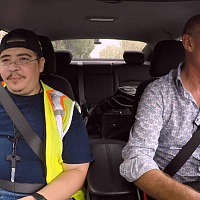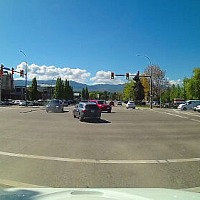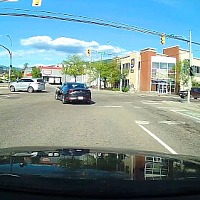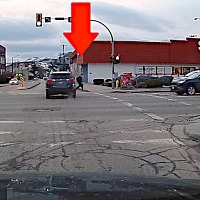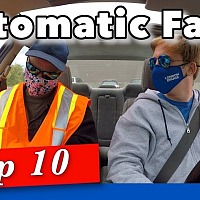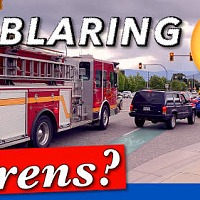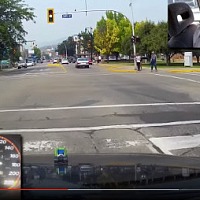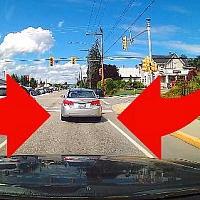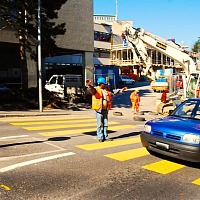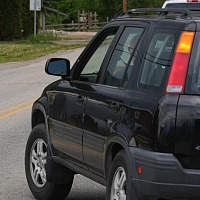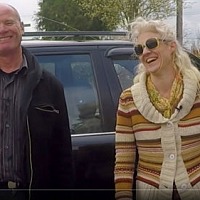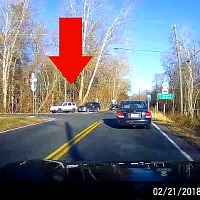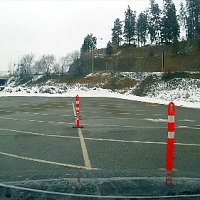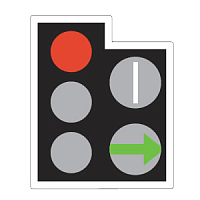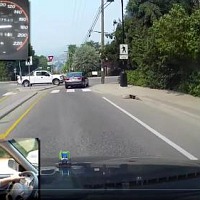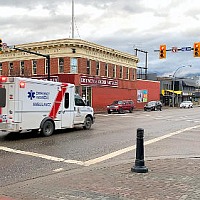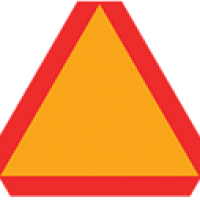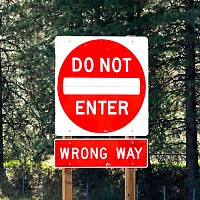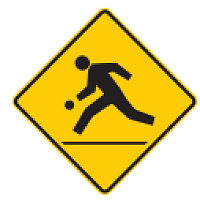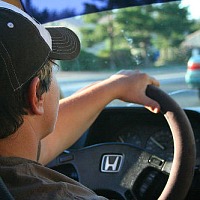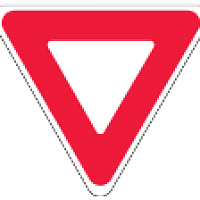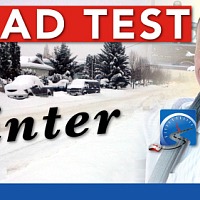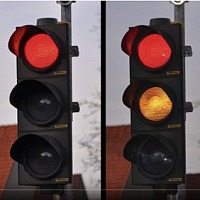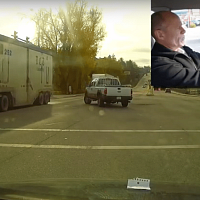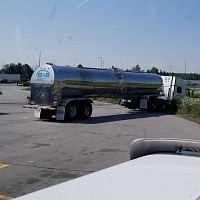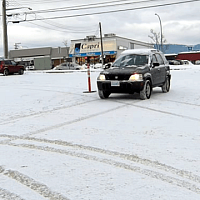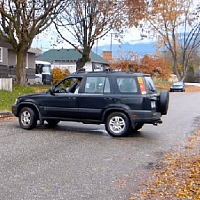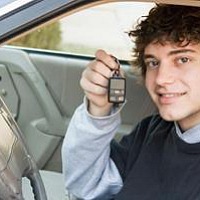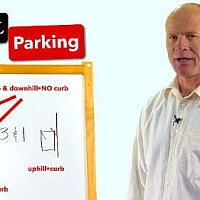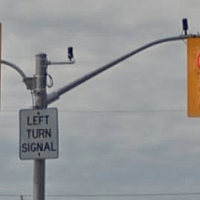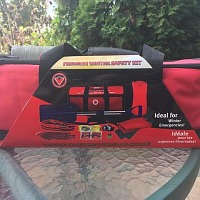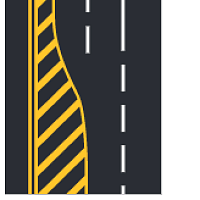Learn how to correctly merge onto a freeway. Watch the video.
https://www.youtube.com/embed/dYUxQPrpCsY
How to Merge onto a Freeway | Pass a Road Test Smart
Closed Caption
Introduction
Hi there smart drivers, Rick with Smart drive test talking to you today about merging onto a highway or freeway from an on-ramp.
I had a comment from Ann - she wanted me to give the other road users a little bit of information about how to do that because she was a bit frustrated by other people getting onto the acceleration lane and stopping, which many of us have seen that happen and that is not what you're supposed to do.
It's called an acceleration lane because you need to get on it and you need to accelerate up to road speed as quickly as possible - either the posted speed limit or the flow of traffic whichever is less.
So today we're going to show you how to merge onto the highway or freeway.
We'll be right back with that information.
Stick around!
[OPENING CREDITS & MUSIC]
Prologue
Hi there smart drivers, Rick with Smart Drive Test - welcome back.
We're talking today about merging onto a highway or freeway from an on-ramp.
Now an on-ramp is more than one piece and there's the on-ramp and the acceleration lane.
The on-ramp is the transition from the road from which you're coming off of onto the highway or freeway and moves you onto the acceleration lane.
Once you get onto the acceleration lane, it's another lane that runs to the right of the traffic that's moving along the highway or freeway.
Once you get on the acceleration lane and you get pointed in a straight line, you need to start looking for your gap.
And you need to accelerate the vehicle up to highway speed, which is either the posted speed limit or the flow of traffic whichever is less.
So you need to accelerate quickly and often times you might need to even put the accelerator right on the floor.
Now the other thing that I suggest to many new drivers - stay on the acceleration lane right to the end, and as you're moving along the acceleration lane, look for your opening and have your signal on the entire time.
Actually you should have your signal on from the time that you're on the on-ramp to the end of the acceleration lane.
And leave your signal on until you merge onto the highway or freeway and are completely in the lane.
Do not turn your signal off until you're completely in the lane because our eyes are attracted to light and movement and because of that flashing light people are looking for your vehicle and are going to assist you in merging onto the freeway.
They're either going to move over to the lane or they're going to slow so that a gap can be created and you can move onto the highway or freeway.
Now one other point about acceleration lanes: on the left you will have continuity lines - pavement markings that are twice as wide and half as long as regular pavement markings that divide lanes of traffic.
And you can see here in the image the continuity lines.
If you have continuity lines on your left it means the lane that you're in is either going to end or exit - and if you're on an acceleration lane, it's going to end.
So you need to be looking for your gap - you need to be signaling and moving to the left onto the highway or freeway.
So what we're going to do now is hook up the cameras here and go for a drive to show you how to merge onto a highway or freeway.
Merging #1
So I know this is an on-ramp, even though there aren't any signs indicating that there is an on-ramp.
There is a merge sign down around here on the highway.
So I'm looking, I've got my left signal on and I'm on on-ramp...
now I'm on the acceleration lane and I'm leaving my signal on.
The vehicle behind me pulled over because I had my signal on and the speed limit is 90 kph (55mph) and I stay on the acceleration all the way to the end, and I merge over with the end of the acceleration lane.
And I'm doing 90 kilometers an hour (55mph) and the vehicle behind me - as you'll see the come up here and go past the front he that vehicle moved over as well to allow me to move over onto the roadway.
So I've moved over onto the roadway and I am at exactly 90 kilometers an hour (55mph) to merge onto the highway.
What I'll do is I'll go down the road here and I'll do another one because that was pretty quick and just so you can see all of the pieces of the merge and see how to do it again.
Merging #2
Actually I think there is a yield sign on this one down here.
Most on-ramps are going to have a yield sign to tell you that you have to give the right-of-way to other traffic.
So we're going to go down here to another one and we'll do one more for you.
The differences you're going to notice on on-ramps is that the on-ramps will vary in length.
On some freeways they'll be very big, especially if you get on a cloverleaf, there'll be a lot of on-ramp - it'll be very long before you get out to the acceleration lane, other ones, like this one that were about to go on right now, they will be very short and will not give you much transition from the road from which you're coming onto the road onto which you're going.
The on ramp is going to be short and you're going to be on that acceleration lane almost immediately.
And I cannot stress enough again: do not stop on the acceleration lane!! You need to get on the acceleration lane and you need to accelerate to highway speed as quickly as possible.
If you stop on that acceleration lane - there are other vehicles coming up behind you that are expecting you to begin to accelerate - they're not expecting you to stop.
So it is an unpredictable action and you could potentially risk being rear-ended and cause a crash and causing other traffic to not know what you're doing.
So you need to be predictable and being predictable is getting on that acceleration ramp and accelerate quickly to either the posted speed limit or the flow of traffic, whichever is less.
This roadway going up here you just heard the rumble strips there, which tells you that this is a high-risk intersection and you can see here there's a stop sign but the stop sign is not for you.
The stop sign is for left-turning traffic and you can see the continuity lines on my left as I move into the acceleration lane and I have my signal on all the way.
And I know it's 90 kilometers an hour and I'm staying on the lane all the way to the end.
And I am at highway speed.
Conclusion
Quick review of merging onto a highway or freeway.
There's two pieces to the road:
1) the on-ramp;
2) and the acceleration lane.
The on-ramp is the piece of road that moves you from the road from which are coming onto the acceleration lane that leads to the freeway or highway.
Obey all cautionary signs on the on-ramp because you don't want to lose control.
Some of them can be quite sharp and quite short; others will be a lot longer, especially if you're on a cloverleaf merging onto a freeway.
Once you get onto the acceleration lane, you need to accelerate quickly.
This is called an acceleration lane - do not stop on the acceleration lane - it makes you unpredictable and you risk being rear-ended or worse yet, risk a crash of vehicles on the roadway because you they don't know what you're doing.
So don't stop - it's called an acceleration lane - get on it and hammer down.
And you know you're on the acceleration lane because there will be continuity lines on your left.
Continuity lines are half as long and twice as wide as normal lane dividing markings.
So know that there are continuity lines and continuity lines tell you that the lane that you're in is either going to end or exit.
If you're on an acceleration lane it's going to end.
Accelerate to highway speed as quickly as possible, which is either the posted speed limit or the traffic flow whichever is less.
Stay on the ramp all the way to the end and just gently merge over into traffic.
The whole time that you're on the acceleration lane be looking, shoulder checking, and checking in your mirror and looking for the gap.
You need to leave your signal on because it gets the attention of other traffic and sometimes they'll either move over to the other lane if you're merging onto a multi-lane road, which most of the time you will be, or they'll reduce their speed and create a gap for you to get onto the highway.
So leave your signal on so that you are in indicating to other traffic that you are indeed merging and they will help you to get onto that roadway.
So leave your signal on, communicate to others that you're going to merge onto the roadway.
Question for my smart drivers:
Leave a comment down in the comment section there - express your grief and how you dealt with that situation.
All that helps out the new drivers working towards getting their license and learning how to drive.
I'm Rick with Smart Drive Test, thanks very much for watching.
If you like what you see here share, subscribe, leave a comment down in the comment section there.
As well, hit that thumbs up button.
Check out the videos below - check out the cards in the upper right-hand corner if you're on a mobile device - all of that will give you great information.
If you're working towards getting a license or towards a career as a truck or bus driver.
Thanks again for watching.
Good luck on your road test, and remember, pick the best answer, not necessarily the right answer.
Have a great day.
Bye now.




